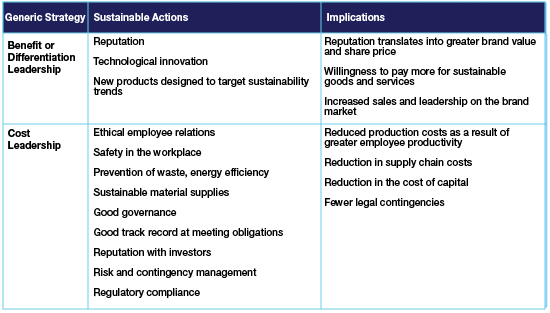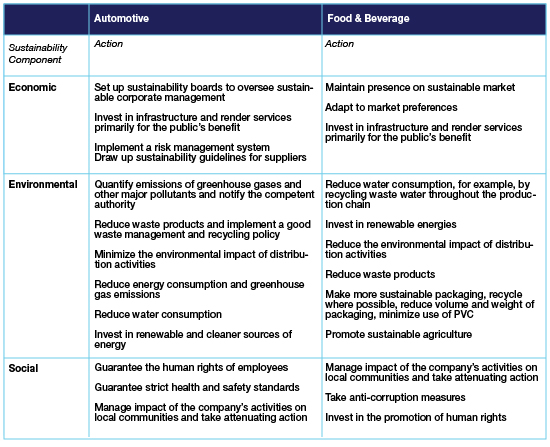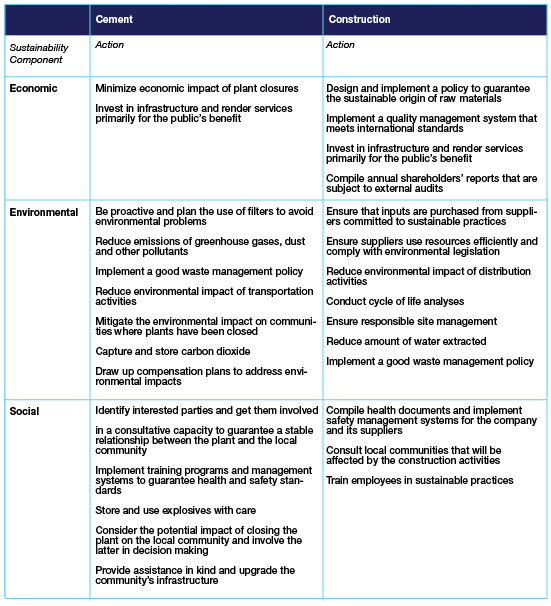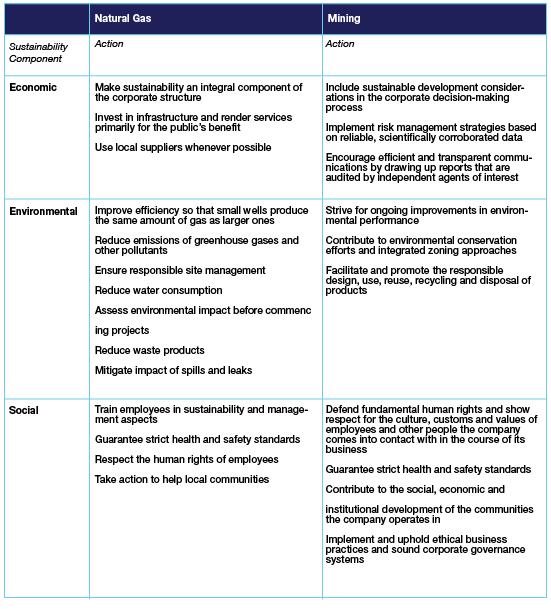Strategic Guide for the Implementation of Sustainable Actions in the Workplace
Posted By Ceci On 29 June, 2010 @ 6:54 am In Edition 33,Strategy | No Comments

By: Antonio Lloret
For companies to maintain a level of competitiveness that allows them to subsist, sustainability must be an integral part of their business strategy. These two aspects -competitiveness and sustainability- are key to success, hence the importance of using natural, economic and social resources efficiently and being able to adapt to consumer demands for sustainable goods and services. But instead of viewing these as limitations, companies should see these as strategic opportunities to create value.
Competitiveness, understood as the efficient allocation of resources (capital, work, technology) and the proper use of natural and social capital, is a prerequisite to the implementation of sustainable actions that enable a company to generate internal and external economic value, while the term “sustainability” presupposes rational use of natural, social and economic resources by companies. Thus, sustainability is about meeting the needs of the present generation without sacrificing the capacity of future generations to meet theirs.
In a strictly corporate sense, sustainability means the company incorporates environmental and social considerations into its commercial operations, strategic planning and frequent interactions with agents of interest. Sustainable practices, however, are the approaches, technologies and strategies the company implements to ensure resources are put to more efficient use, reduce waste and control environmental risks. Such practices can also include the design and manufacture of ecological products, reducing the environmental impact of the supply chain and working with the local community to minimize the environmental consequences of the company’s operations – all while creating economic value.
But how can a company achieve these goals? At what point can we say a company is sustainable and competitive at the same time? What specific actions can it take? A good starting point is to understand how a company creates value and what the benefits of sustainable actions are. According to the competitive advantage model (Porter, 1985), a company that proactively seeks to improve its industry position can create a competitive advantage by employing a differentiation, focus or low-cost strategy.
A differentiation strategy is one where the company seeks to offer a unique product for which the consumer is willing to pay a premium or one where the consumer obtains an added benefit, not necessarily monetary, that makes him or her prefer that company’s products.
A low-cost approach employs aggressive price strategies designed to shore up profits by selling at average industry prices or below the industry average to gain market share.
Finally, a company that opts for a focus strategy concentrates on a narrow market segment and will use either a cost leadership strategy or a differentiation strategy or a combination of both to get ahead in its focus market.
These competitive advantage strategies can be linked to the three pillars of sustainability – economic, environmental and social-, which, rather than being mutually exclusive, are complementary. Figure 1 is commonly used to illustrate the concept of sustainability and its components. At point “S”, where these three pillars intersect, it is possible to speak of sustainability. In the case of companies, this means their strategies are aligned with all three components to a degree that allows them to honor their social and environmental commitments, while still creating economic value.
Figure 1. Sustainability Diagram. Source: Adams (2006).
From a sustainability perspective, the strategic actions a company can take to differentiate itself are mainly associated with its reputation and brands; its capacity to innovate and adapt to the changing preferences of today’s consumer to produce sustainable product designs that have a lower environmental impact; and willingness on the part of consumers to pay more for goods with sustainable attributes. On the cost strategy side we find more efficient production processes, greater employee productivity, a reduction in the cost of capital as a consequence of fewer run-ins with environmental regulators and innovation that puts cleaner, more efficient technology at the company’s disposal.
Table 1 lists some sustainable actions liked to the aforementioned generic strategies and their implications.
Table 1: Sustainable Actions Adapted to Generic Competitive Advantage Strategies. Adaptation of the Blackburn Model (2007).
Clearly some of these value-adding actions, such as maintaining a good reputation and reducing risks and contingencies, are actions the company would carry out anyway during the course of its daily operations and cannot necessarily be attributed to sustainable actions.
We could argue that if the company has already taken actions such as these, its sustainability or competitiveness is not up for debate and as such, it should have no difficulty communicating the sustainable actions it takes internally and externally, in light of dynamic market conditions, current regulations, the demands of agents of interest and increasing consumer preference for sustainable goods and services.
To understand how a company’s actions can be linked to sustainability with a view to maintaining competitiveness, we took it upon ourselves to compile a list of the best business practices implemented by some of the world’s leading companies, broken down by sector and categorized according to the economic, environmental and social components of sustainability. In Mexico, these include companies like Nissan de México, Bimbo, FEMSA, Grupo Modelo, Cemex, Casas Geo, Met-Mex Peñoles and Petróleos Mexicanos, all of which take specific sustainable actions.
Conclusions
The proper alignment of a company’s strategy with the components of sustainability stems from a vision in which it is possible to link competitiveness with sustainability. In fact, strictly speaking, we shouldn’t see one as separate from the other, since a company’s survival depends largely on long-term sustainable actions that take into account economic, environmental and social factors. ?
References
Adams, W.M. (2006), “The Future of Sustainability: Re-thinking Environment and Development in the Twenty-First Century,” Report of the IUCN Renowned Thinkers Meeting, 29-31 January, 2006.
Blackburn, W. R. (2007), The Sustainability Handbook. London: Earthscan.
Lloret, A. (2009) Competitividad y Sustentabilidad: Las dos caras de una moneda que genera valor. Mexico: Dirección Estratégica, August 2009.
Porter, M. E. (1985), Competitive Advantage, New York, The Free Press, pp. 11-15.
Article printed from Dirección Estratégica: http://direccionestrategica.itam.mx
URL to article: http://direccionestrategica.itam.mx/guia-estrategica-para-implementar-acciones-de-sustentabilidad-en-la-empresa/
URLs in this post:
[1] Image: http://direccionestrategica.itam.mx/wp-content/uploads/2010/06/guia-1-012.jpg
[2] Image: http://direccionestrategica.itam.mx/wp-content/uploads/2010/06/guia-estra-011.jpg
[3] Image: http://direccionestrategica.itam.mx/wp-content/uploads/2010/06/guia-estra-021.jpg
[4] Image: http://direccionestrategica.itam.mx/wp-content/uploads/2010/06/guia-estra-032.jpg
[5] Image: http://direccionestrategica.itam.mx/wp-content/uploads/2010/06/guia-estra-042.jpg




